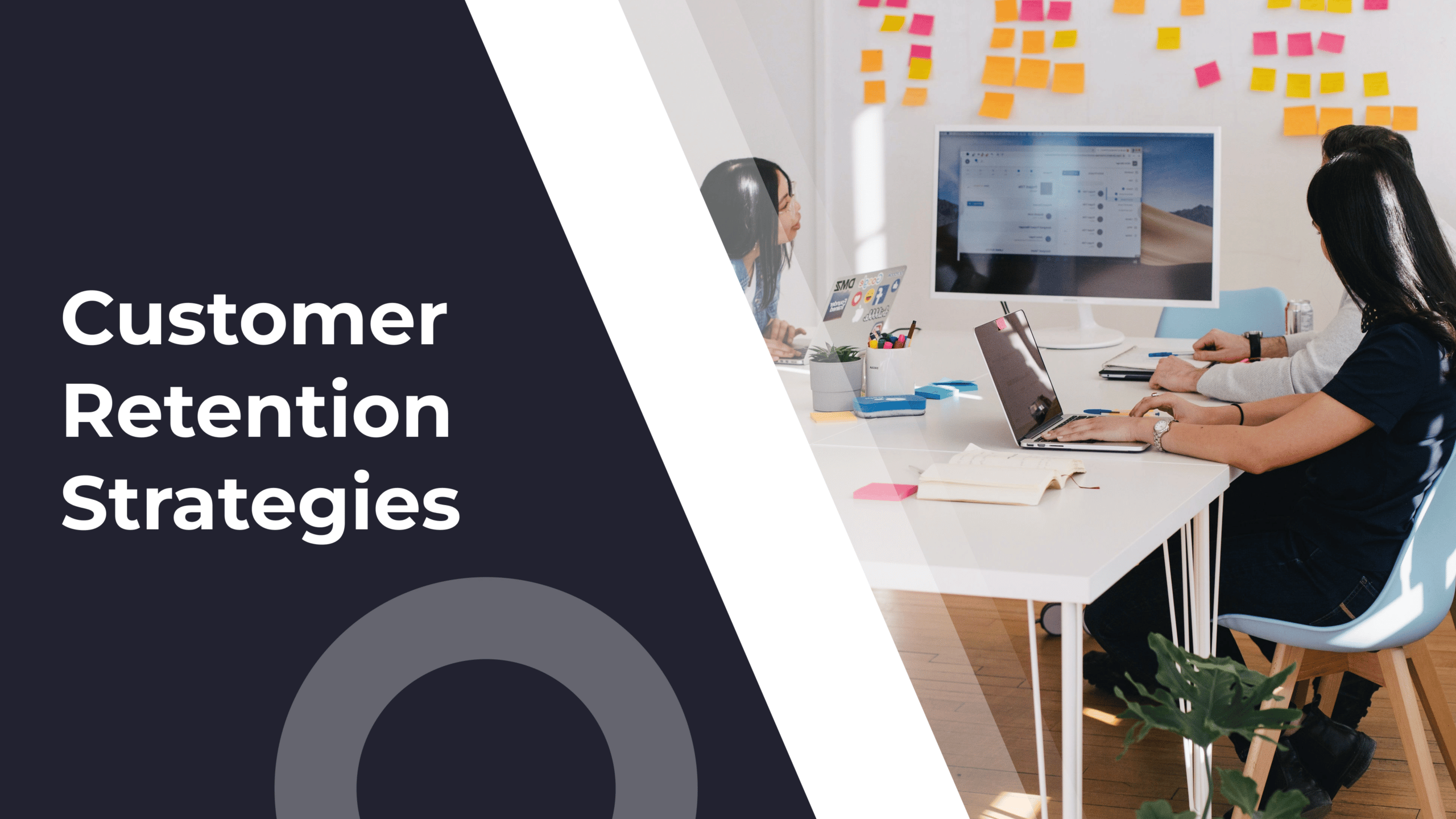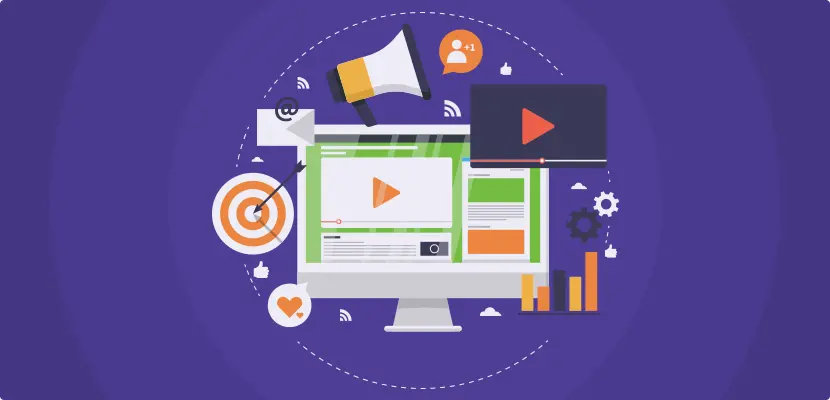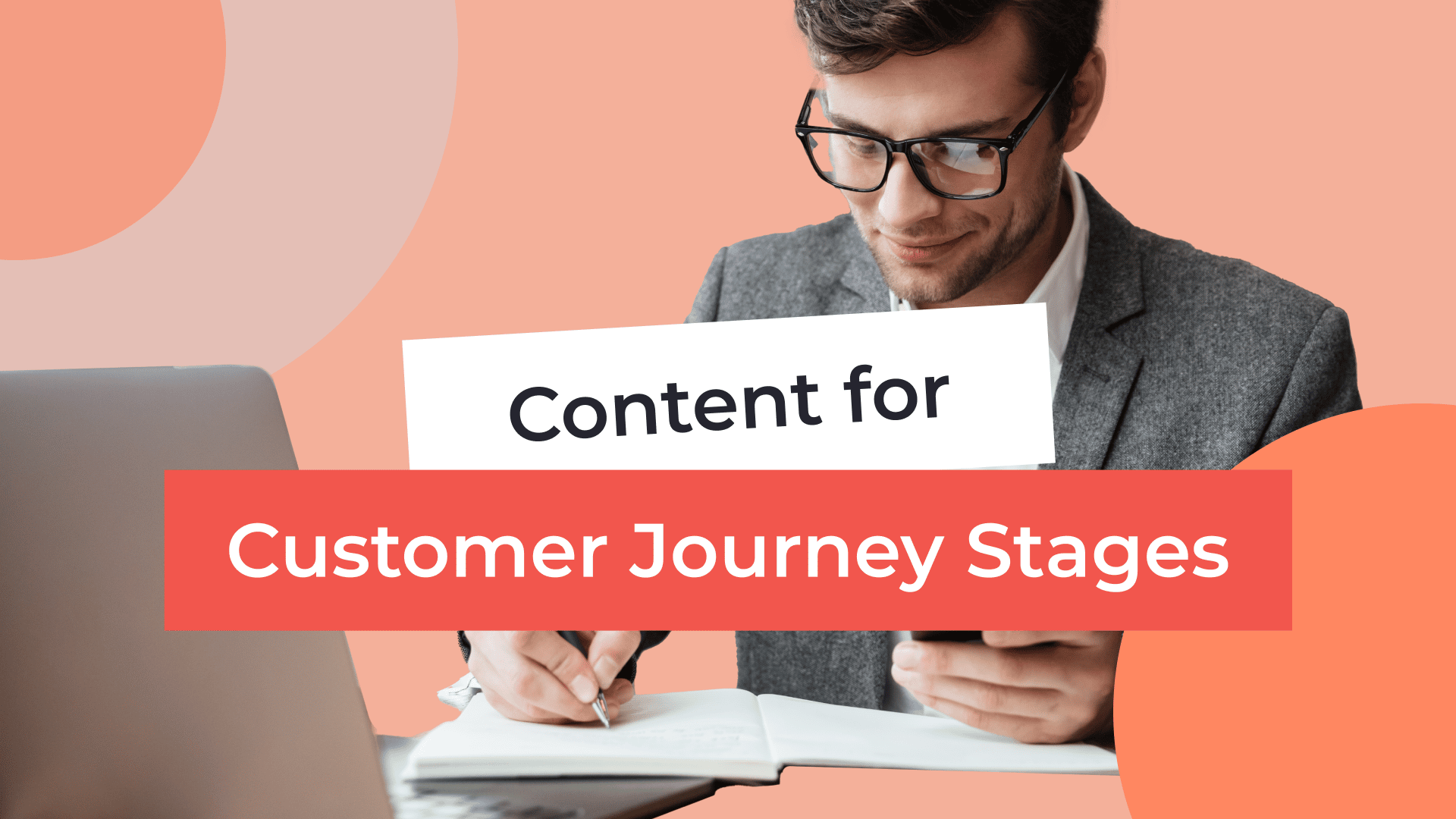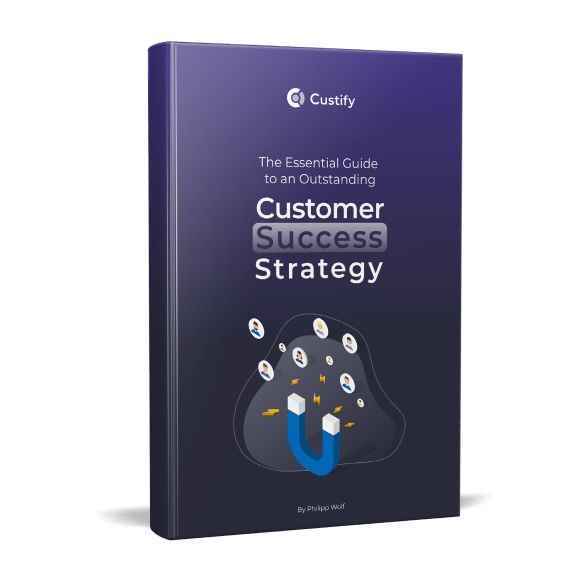The product adoption curve is already a classic marketing topic – but where did it start? What does it mean? And more importantly, how can you use it for your SaaS?
That’s what I’ll be exploring today in our article.
Customer success is one of the key departments responsible for product adoption. Naturally, then, it’s essential for CSMs everywhere to familiarize themselves with the adoption curve and have a clear understanding of their product’s position on it at any given time.
Let’s begin with the definition, which has its roots all the way back in 1962.
What Is the Product Adoption Curve?
The product adoption curve is a model that showcases the process by which an innovation (usually an idea, practice, object, or technology) is adopted by a group of people or organizations.
The basic idea of the curve is to divide the total number of potential adopters over time into innovators, early adopters, early majority, late majority, and laggards. This classification is based on a series of factors ranging from communication to the social system in which the product is launched.
The concept also goes by a few other names, most notably the “technology adoption curve” or the “diffusion of innovation” theory. The latter name and the broader concept were both developed by Everett Rogers in his 1962 book of the same name, “Diffusion of Innovation.” As a result, it’s also sometimes referred to as “Roger’s Curve.”
Whichever name you choose to use, the end result is a schema that looks like this:

Bass’ Mathematical Formula for Innovation Diffusion
As an aside for our mathematically inclined audience, let’s look at an interesting formula.
Rogers’ initial research lacked a precise method for calculating the time it would take to achieve saturation, or 100% adoption, within a target market.
That led many researchers to extrapolate on his theory, attempting to add a mathematical formula. Most notably, Frank Bass created his own diffusion model that resulted in the following mathematical equation:

Factors:
dN(t) / dt = charge of adoption at a given moment (t)
N(t) – cumulative variety of adopters at a given moment (t)
M = overall capability market length
p = coefficient of innovation
q = coefficient of imitation
Bass’s equation is particularly popular and useful for new products as it can predict their adoption trend. As such, it’s mainly used in sales forecasting along with sales prospecting and qualification. If you’d like to try out this complex formula for yourself, MIT has an XLS file that helps you simulate the Bass diffusion model.
Product Adoption Stages Explained

- Innovators
Initial group of adopters. In tech and SaaS, this usually includes geeks who like to hunt for the newest innovations, or users with a very specific pain point your product solves. Innovators are willing to bet on your solution even if it’s just in the early stages because they see the vision, appreciate your work, and want to help. Some of these innovators will end up being model customers, so treat them right from the start.
Also known as: tech enthusiasts, early market adopters, pioneers, developers - Early Adopters
Early adopters are a more cautious bunch. They like to bet on new products, but maybe they don’t hear about them at first, or they’re waiting for a few reviews, or they’re hesitating because of migration concerns. Still, they will adopt the innovation sooner than the rest. They’re also often the first thought leaders to talk about an innovation – they will post on LinkedIn, they will comment on your posts, they will drive the product forward.
Also known as: visionaries, influencers, early market adopters, thought leaders - Early Majority
Moving into the mainstream market, the early majority is a large group of users who adopt your product once it’s established as trustworthy. Once you make it to this stage, you are on the right track for growth. Testimonials, reviews, and case studies matter a lot to the early majority, as do the opinions of thought leaders, so make sure your marketing focuses on those areas first.
Also known as: pragmatists, realists, mainstream users/market adopters, cynics - Late Majority
Budget constraints, significant migration roadblocks, and time constraints often prevent this group of users from adopting an innovation. They will need convincing, time spent showing them the value of your solution, and maybe even discounts to even try the product. The flipside? They will likely be very loyal customers if your innovation matches their desired outcomes.
Also known as: conservatives, late market adopters, mainstream users/market adopters - Laggards
Laggards may not have heard of your product, they might not care for innovation, they might doubt its value, and they probably don’t believe in the technology. This group is significantly smaller than the previous ones (typically) and might never adopt the innovation, preventing you from reaching market saturation (which is not necessarily a bad thing). Some laggards might even adopt your product due to market pressure while telling you how much they dislike it.
Also known as: skeptics, doubters, nonbelievers, late adopters, last adopters
Here’s a fun video that breaks down the product adoption curve:
@snaptocks Baby invisible wall analysis #tech #sociology #baby #greenscreenvideo #greenscreen ♬ Satie “Gnossiennes No.1” (piano)(1118396) – Akira Orihata
Other Stages of the Product Adoption Curve
If you’ve seen the TikTok video above, you might think – wait, there seem to be other categories you haven’t talked about. Well observed. Let’s take a closer look:
- New Innovators
These are innovators who join in the early majority or late majority stages but have significant input on the direction of the innovation and, in some cases, even improve upon the innovation, making it easier for everyone else to adopt the solution. - Perfectors
In my view, these are new innovators who perfect an initial solution. Some new products may have the right idea, but are missing the mark by very little. That’s where perfectors come in, adding feedback and attempting to improve upon an existing innovation to reach the widest possible majority. - Regulators
Regulators are governmental entities that determine how laws should be built around an innovation. They are usually members of a legislative body. An example of this is the global movement to regulate AI. - Competitors
At some point during the curve, competition between innovators will inevitably arise. Although much simplified, the video above shows how excessive competition can lead to behavior contrary to progress and more akin to gatekeeping. This type of behavior, along with poor awareness and product weaknesses, can lead to failed diffusion, where adoption does not reach 100% of the market.
On an interesting note, Rogers mentions that failed adoption can be a result of information versus influence. Let’s exemplify what he means through a hypothetical SaaS example: a company launches a brand new product with a full marketing campaign that initially looks to be on the right track. However, a competitor with an older product hires an influencer to speak against the type of product being launched, not even attacking the company directly. So while the marketing campaign did all it could, it had no chance against the influence of a well-established figure.
What Is the Product Adoption Chasm and How to Cross It?
The product adoption chasm is the space between early adopters and early majority on the product adoption curve. It’s called a chasm because it can be easy for many products to fall into it, never having reached widespread adoption due to a variety of reasons.
The use of the term “chasm” in this context was coined by Geoffrey A. Moore in his 1991 book “Crossing the Chasm” – now a well-established marketing book. To quote Moore:
To be specific, the point of greatest peril in the development of a high-tech market lies in making the transition from an early market dominated by a few visionary customers to a mainstream market dominated by a large block of customers who are predominantly pragmatists in orientation. The gap between these two markets, all too frequently ignored, is in fact so significant as to warrant being called a chasm, and crossing this chasm must be the primary focus of any long-term high-tech marketing plan. A successful crossing is how high-tech fortunes are made; failure in the attempt is how they are lost.
– Geoffrey A. Moore, Introduction to Crossing the Chasm, 3rd Edition, Published 2014
- Generally, new products fall into the adoption chasm because:
- They haven’t properly communicated the benefits of their innovation
- They haven’t managed to obtain enough traction and early adopters
- They haven’t focused on their best-fit adopters, instead diffusing their marketing efforts over a broad group of potential adopters, thus reducing their effectiveness.
- The product has glaring issues that cannot satisfy the potential early majority.
- Word-of-mouth about the product simply did not pick up after the first stages.

Measuring Adoption in SaaS (KPIs & Thresholds)
You have a few options when it comes to metrics that can help accurately track your position in the adoption curve.
- Activation rate: users reaching the A-ha moment within the first 14 days.
- Feature adoption: % of active users using core feature ≥ N times/week.
- Time-to-value (TTV): time between signup and first outcome; target days, not weeks.
- DAU/MAU ratio: indicates customer stickiness (healthy SaaS often have a DAU/MAU ratio between 0.2–0.3).
- PQL/PQA rate: percentage of trials/accounts hitting product-qualified criteria and showing strong intent.
- Cohort retention: track week 1/4/12 retention. If you’ve reached a plateau, that means you have a steady number of users.
- Leading → lagging linkage: When engagement goes up, revenue should follow, i.e., when your retention rate grows, NRR/GRR should also be going up. Track both in your customer dashboards.
Product Adoption Curve in Tech vs Other Areas
Rogers’ diffusion of innovations theory was not initially conceived as directly applying to technology. Rogers studied the broader category of “innovation” in specific fields such as anthropology, sociology, education, and healthcare.
Although a connection to technological products could be easily inferred, the first ones to write directly about the connection between Rogers’ Curve and tech product adoption were Peres, Muller, and Mahajan in a 2010 article. According to them:
Although diffusion modeling has been researched extensively for the past 40 years, we believe that this field of study has much more to offer in terms of describing and incorporating current market trends, which include the opening up of markets in emerging economies, web-based services, online social networks, and complex product–service structures.
– Peres et al., Innovation diffusion and new product growth models: A critical review and research directions
Rogers’ theory has also been used in other areas, most notably:
- Policy and politics
- Ideas
- Patents
- Services
- Deep learning
Criticisms of the Product Adoption Curve
There have been several criticisms raised of Rogers’ theory. Let’s sum up the most common ones:
- Too many people have written about it and adopted it loosely, leading to a dissolution of the methodology due to a lack of consistency.
- The methodology oversimplifies adoption. Humans and organizations made up of humans are inherently complex and can have a wide range of reasons for adoption.
- Implies that all innovations are positive and would have no reason not to be adopted (Rogers called this the pro-innovation bias).
- Adopters, according to this model, don’t give any feedback or have any impact on the innovation. If they do, they become innovators themselves – which is not always true. If users do have an impact on the product through their feedback, as is often the case in tech and SaaS, then the model falls apart since it doesn’t account for this aspect.
Product Adoption Curve in SaaS: Tactics to Cross the Chasm
You might think your first step should be to determine your product’s current position on the curve. While that may be helpful to pinpoint with precision (often using Bass’s equation above), it can be time-consuming and inexact – remember Roger’s curve isn’t a precise scientific approach.
Instead, it may be smarter to focus your attention on the teams that can influence adoption the most: product, sales, marketing, and customer success. Below, I’ll showcase some tactics that I believe underscore the role each team has in the process.
1. Product Design and Management Tactics
Your ascent on the product adoption curve starts with your product design and strategy. Here are some simple yet effective ways to nudge adoption towards your targets:
1. Devising a product experience that supports faster adoption.
When you first envision how your product will look, special attention should be paid to how you encourage adoption. If your product has too many screens or steps on the road to value realization, you’re essentially introducing more steps where adopters can fail. That doesn’t always mean they will fail, and clear guidelines and documentation can usually push even the most complex products over this hurdle. However, you have to use user-centered design principles to build an intuitive experience.
2. Launching with a pricing strategy that encourages wide adoption.
Next, you should discuss the pricing strategy with the Product, customer success, and C-level execs. Opting for a product-led, self-service, freemium model might increase adoption significantly, but could result in high churn. Are you willing to risk it? Is the product intuitive enough? And is CS equipped to prevent churn?
3. Focusing on individual user adoption vs. lengthy procurement cycles.
Also called bottom-up market penetration, this product strategy focuses on developing solutions with end-users in mind. The logic is this: if we can skip procurement calls, lengthy approvals, and endless demo calls, the chance end-users adopt and get value from our product increases.
4. Designing a value-trial that shows the true value.
Too many times in SaaS, we encounter free trials that amount to a glorified product demo or interface tour. Instead, focus on the core outcome of your product and try to prove to users you can fulfil what you set out to do. So aim for a trial that:
- Only lasts for a short amount of time
- Allows users to try out the key features of your product
- Doesn’t work like a demo
- Showcases the true product experience
5. Adding progressive, in-app onboarding guidance.
New users are often confused about the next step. Even with the best UI in the world, there will always be some who prefer a different product experience. So guide your users through your app step-by-step, show them what to do next. You can always use a checklist or in-app prompts to help point out key actions on their road to that coveted A-ha moment.
6. Launching with diffusion-optimized pricing.
It’s so easy to go for Cost-plus Pricing (meaning CAC + COGS + a profit margin), but if you want to truly optimize your product for diffusion, we recommend that you:
- Offer a starter plan, new users and potential adopters need a clear, simple way in
- Use a pricing model or strategy that encourages adoption. Example pricing strategies and models: penetration pricing, freemium pricing, free trial pricing, per-user pricing, per-active-user pricing
- Add gentle limits to your product (also called bumpers), and allow users to upgrade easily. Just make sure the A-ha moment happens before users hit a paywall.
2. GTM Tactics (Sales, Marketing, PLG)
1. Tracking product usage and qualifying leads based on data.
Once you reach the early adopters stage, you can examine your best-fit customers and qualify new leads to create a lookalike pool. This should help you cross the chasm and make it to the mainstream market.
2. Offsetting the cost of switching from competitors.
By tracking adoption and monitoring your adoption curve progress, you can start to notice patterns. One such pattern is when potential adopters hesitate due to the cost of switching. This is a simple problem to solve, as you can offset those costs through discounts, dedicated CSMs, enablement managers, and customer success engineers.
3. Creating sales cycles to re-engage with old leads.
If your leads are unresponsive, it doesn’t always mean they’re cold. Most best practices will tell you to send at least 5 messages before labeling a lead as cold. Don’t spam them more than that and always follow up towards the end with a final, no-pressure email, then move them to your marketing contacts. These simple best practices can help you climb the steep early market curve. Think of them like a good pair of boots on a hike – sure, you can probably complete it in sneakers, but your chances increase if you have the right tools.
4. Marketing and selling innovative features, not the entire product.
Remember, the curve was initially designed for innovations. If your product has innovative features, those should be the focus of your marketing, not the entire product. If you’re not moving the needle, the early adopters won’t show up – you’ll just look like another face in the crowded market.
5. Routing PQL/PQA to encourage fast switching.
When a user looks ready to buy, you don’t want to add friction to their experience. Instead, you should try to keep only the essential steps and make their journey as smooth as possible.
Aim to:
- Automatically send them to a salesperson within 24 hours. Hot leads can get cold very quickly.
- Depending on the type of product you have, collect information about migration needs as early as possible.
6. Proving the product works through credible references.
Show potential adopters why your product works. Here are a few things you can use:
- ROI calculator for your product
- Real, quantified case studies
- A third-party analyst report or benchmark
7. One-upping your competition with better features.
Potential adopters are always looking for the product that can give them the biggest advantage. If you present yourself as the natural choice, you’ll encourage adoption and move ahead of your competitors. Some quick tactics that can position you as the better alternative:
- Fast migration promises (and delivery). Example: “We move your data in 48 hours.”
- Engineer import wizards based on common client needs / use cases
- Compile and publish parity guides on your websites – showing the difference is always better.
3. Customer Success Tactics
1. Mastering onboarding, implementation, and adoption.
In customer success, we’re usually the masters of onboarding, leading the charge in delivering valuable experiences to customers as soon as they sign (and, many times, even before that). CSMs should pay close attention to the product adoption curve and plan accordingly – new users that are a good fit should be a model for product adoption practices. Encouraging feature usage only requires minutes in your customer success software to develop an engaging playbook for that specific customer segment. And implementation? We have CS enablement specialists and CS engineers just for that.
2. Proactively monitoring adoption to minimize friction.
In CS, proactive engagement is one of the key tactics we use to manage churn. With proper care and fine-tuning, it can also serve adoption. Friction points, particularly in the early stages of a customer’s journey, can directly prevent widespread adoption. If every user has to jump through hoops to reach the a-ha moment, then you’re already on the way to the bottom of the chasm. Here’s an example of how you can implement this:
- Set up a playbook that triggers once usage drops by 30% over a 4-week average.
- Send automatic messages to offer help through guides and KB articles
- Ask the customer if they’d like further help and set up training sessions to re-engage them.
3. Delivering value at every moment of the adoption stage.
Speaking of the a-ha moment, it’s also sometimes called the value realization stage, i.e., the point at which a user or a customer receives the value they wanted or expected from a product or service. However, that’s not the only time when you can deliver value to customers. Your users might welcome other forms of value, such as an onboarding guide, a manual of best practices, or a yearly industry report.
4. Setting activation SLOs to predict value-additions.
Onboarding is a critical time for customers. Early adopters might churn if anything goes wrong. One way to counteract this risk is through time-boxed onboarding:
- Split your onboarding flow into time-based phases, such as 14 days, 30 days, and 45 days.
- Set some clear KPIs and OKRs for those phases and create corresponding customer health scores in your CSP.
- Let customers see the goals for the phases – show them the summit they’ll reach through their efforts.
5. Holding regular QBRs with the majority of your users.
QBRs are a great way to show customers you’re familiar with their situation and are tracking their progress towards their outcomes. Lots of times in CS, though, QBRs are reserved for high-ARR accounts. So imagine how customers would feel if the majority of them got the same level of care. You can simply use customer portals to quickly put together a report that shows:
- Customer outcomes vs their planned progress.
- A clear adoption heatmap.
- A next-feature plan – what they can start using next.
- An ROI snapshot – clear numbers corresponding to how much value they’re receiving from your product.
6. Making churn an impossible scenario.
Instead of charging for churned customers, make your product indispensable and make the cost of switching too high. Think about adding things like:
- Saved configs that customers couldn’t simply import into a new tool
- Templates that cannot fit any of your competitors’ products
- Saved and reusable API keys
- Make an estimate for how much switching would cost and show it to users thinking of switching.
Think of it like making your product so good that any other option would feel like a massive, costly endeavor. A great example of this is the iPhone: if you want to switch to a newer model, you can simply import everything. However, if you want to switch to an Android device, migrating all your data can only be done manually or through third-party apps that get access to your data and might even charge for the full migration.

How Are You Using the Product Adoption Curve?
As SaaS companies cover a wide range of industries and markets, your way of using the product adoption curve may be vastly different from other SaaS companies. But one thing we can all agree on is that you need hard, verifiable data to make verifiable predictions.
See adoption where it happens.
Custify pulls product events + CRM + billing into health scores, flags PQL/PQA, and triggers adoption playbooks and QBR-ready portals. Want a quick look at activation funnels and cohort retention in one view? Book a 15-minute demo.




